Analytics

Institut für Sicherheitspolitik

I
The EU and the Eurasian Economic Union: Dealing
with a Common Chinese Challenge
In 2015 the Eurasian Economic Union (EAEU)
became the latest version of integration in the post-soviet space, bringing together Russia,
Kazakhstan, Belarus, Armenia and Kyrgyzstan in a Union, taking the European Union as its model.
However, five years later the EAEU is still suffering from a number of structural weaknesses, which
have restrained the organisation from becoming much more than a Customs Union with little prospects
to fully implement the free movement of goods, capital, services, and labour and develop deeper
economic integration between its members. As Ukraine's refusal to align itself with the EAEU,
signing an Association Agreement with the EU instead, had directly contributed to Russia's
aggressive behaviour towards its neighbour, the EU refrained from establishing any formal
relationship with the EAEU. The organisation was mainly viewed as a Russian-dominated geopolitical
instrument to re-establish its hegemony in the post-soviet space. In this context, the EU has
restricted its relations with Russia and strongly preferred to deal with the other EAEU member
states on a bilateral basis.
However, as the crisis between Russia and the West stagnated,
in some EU member states, including Germany and Austria, politicians and business circles argued
that a constructive relationship between the EU and the EAEU might pave the way for a broader
political solution. In practice, only some informal contacts between both Commissions were
established. Recently, the debate on the perspectives for dialogue and cooperation between the EU
and the EAEU has returned. Most prominent was President Macron's intervention, who referred to it in
his meetings with President Putin last year. Whereas some experts have argued that it would indeed
be "time to let down the drawbridge", [1]
others are convinced that a Europe "from Lisbon to Vladivostok" remains an illusion. [2] Only
a few have suggested a more integrated EU-approach towards connectivity across the Eurasian
continent, linking Europe to China "from Lisbon to Shanghai", [3]
although the common challenge China is posing to both the EU and Russia seemed to have been one of
President Macron's considerations to include EU-EAEU dialogue as a possible area for selective
cooperation.
This article will investigate how the Chinese Belt and Road Initiative (BRI)
could change both the EU's current relations with the EAEU member states and with the Eurasian
Economic Commission. In particular, it will look into possible options to merge the current parallel
dialogues on technical standardisation with China and the EAEU to prevent the emergence of (new)
non-tariff trade barriers across the Eurasian continent and increase connectivity. It will conclude
with some recommendations for the EU to elaborate a more comprehensive strategic approach towards
sustainable and rules-based connectivity across Eurasia and to include the EAEU in the EU-China
Connectivity Platform.
Tony van der Togt
April 2020


